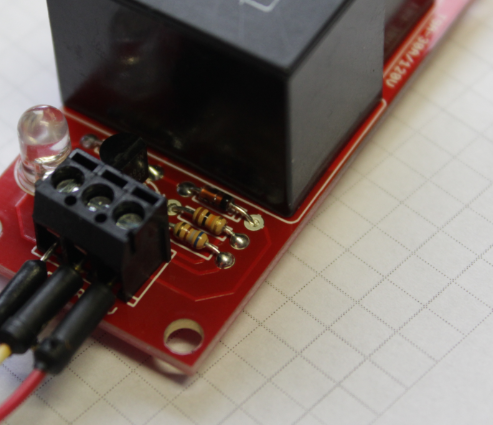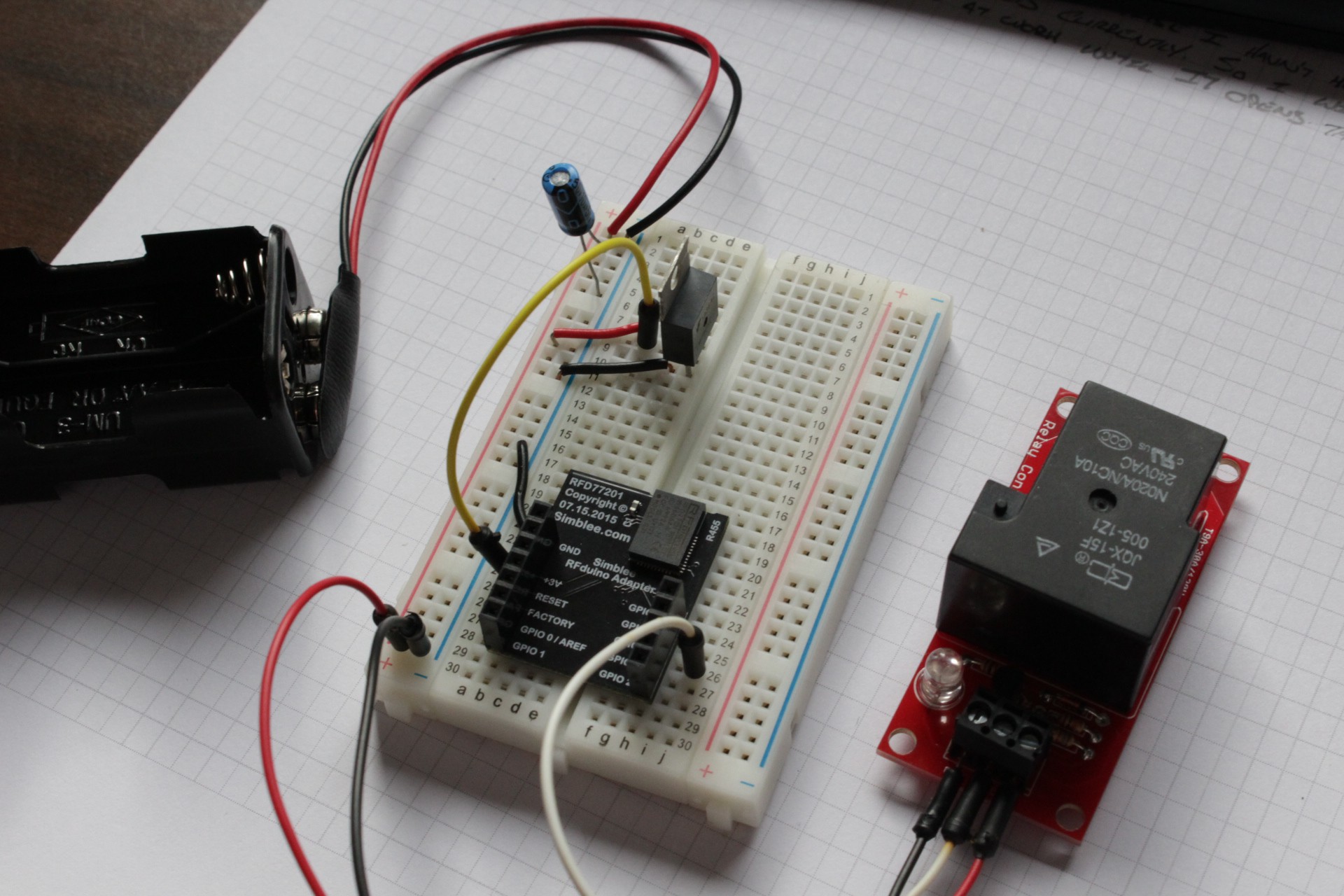-
1Step 1
Simblee App, Arduino IDE, and Driver Setup
-
2Step 2
Create Simblee Application
This is the heart of this project, a mobile device app programmed on the Simblee. The following is the code for creating a user interface to control the Simblee IO pin.
Include the SimbleeForMobile.h Library
#include <SimbleeForMobile.h>
Define Relay Pin
The pin numbering on the Simblee breakout is 0-6. I recommend using one 2-6 as 0 and 1 are used for the serial port.
#define RELAY_PIN 4Create a Global ID Variable
We will need a place to store the ID of the switch object in the user interface. It needs to be of global scope.
int switchID;Setup
Setup the RELAY_PIN for digital output and start the SimbleeForMobile library using the begin() function, a very important step!
void setup() { pinMode(RELAY_PIN, OUTPUT); SimbleeForMobile.begin(); }Loop
The Simblee loop() routine is very different from what we are used to seeing with Arduino programs. The SimbleeForMobile library uses callbacks to execute various parts of the program and the only required code is to call the process() function every time through the loop(). Placing additional code in the loop will not break this, but it may slow down the responsiveness of the app. Especially avoid long delay() calls.
void loop() { SimbleeForMobile.process(); }User Interface
Now we program the UI. The entire ui() routine is bookended by the beginScreen and endScreen functions. Everything placed between these will be drawn on our screen. This app uses only two elements, text and a switch. The text will simply serve as a label for the switch and the switch will control the IO pin.
void ui() { SimbleeForMobile.beginScreen(); SimbleeForMobile.drawText(70, 160, "OUTLET", BLACK, 24); switchID = SimbleeForMobile.drawSwitch(200, 160); SimbleeForMobile.endScreen(); }The parameters for the text are: (x_origin, y_origin, display string, color, size).The parameters for the switch are (x_origin, y_origin).
The call to drawSwitch() returns the ID of that UI element, which is why we created the switchID variable.
Connect the UI to the IO
Finally, we can connect the user interface, specifically the switch, to the IO pin on the Simblee. This is achieved with the ui_event function. When the user toggles the switch on the screen, an "event" is triggered and the switchID is passed into this function. An "if" structure determines if the ID of the event that happened is the same as the switchID, and then toggles the IO pin to reflect the value of the switch, 1 or 0.
void ui_event(event_t &event) { if (event.id == switchID) { digitalWrite(RELAY_PIN, event.value); } }The source code Arduino file is available in the files section of this project.
-
3Step 3
Modify and Assemble Beefcake Relay Kit
The SparkFun Beefcake Relay Kit comes in a ready-to-build kit. You can solder everything in place with the exception of one of the resistors.
The kit uses a 2N3904 NPN transistor used to take the low-current, 5V control pin voltage and trigger a much higher current for flipping the mechanical relay. The 2N3904 requires 5mA on the base pin to drive the transistor into saturation (fully open) mode. So for a 5V control voltage, the beefcake relay kit places a 1k resistor on the base of the transistor and using Ohm's law,
The only problem for us is that the Simblee is a 3.3V device. Using the same math as above, we see that the max current that the base of the transistor will get is 3.3mA. This results in very sporadic behavior on the relay. So we need to get that current up by replacing the 1k resistor with something smaller. Back to Ohm's law,
Something very close to this value will work, a 680 for instance. Don't go too small, though. The Simblee is a very low current device, rated for 5mA per pin and 15mA across all pins at any given time.
Now go ahead and get the soldering iron hot. Some of those big pins on the relay will take some time to heat up, be patient. Pay close attention to the placement of the diode, too. Direction definitely matters with those.
This picture shows the 680 ohm resistor farthest from the relay body.
-
4Step 4
Wire Relay and Outlet
See SparkFun Tutorial for this bit.
-
5Step 5
Put It All Together
Assemble the Simblee, battery pack, 3.3V regulator, capacitor, and relay as such:
- The battery connects to the vertical rails shown on the left of the breadboard. VCC to red, GND to black.
- The bypass capacitor is in parallel with the battery, connected to both VCC and GND. Orientation matters for electrolytic caps! (Black stripe is GND).
- Check the datasheet for the voltage regulator you select, the one I used from SparkFun has the middle pin as the 3.3V (Vout). This is the yellow wire.
- Power the Simblee with the 3.3V wire (NOT battery VCC) and GND to GND.
- Connect the relay voltage pins to the battery rails and the control (white wire) to GPIO 4 on the Simblee.
Note: I don't show the relay connected to the outlet in this picture, follow the SparkFun tutorial for that part!
-
6Step 6
Put It In a Box
-
7Step 7
Use It!
Simblee App Controlled Outlet
Use the Simblee BLE module and mobile device app to control an electrical outlet.
 Nate Bowen
Nate Bowen


Discussions
Become a Hackaday.io Member
Create an account to leave a comment. Already have an account? Log In.